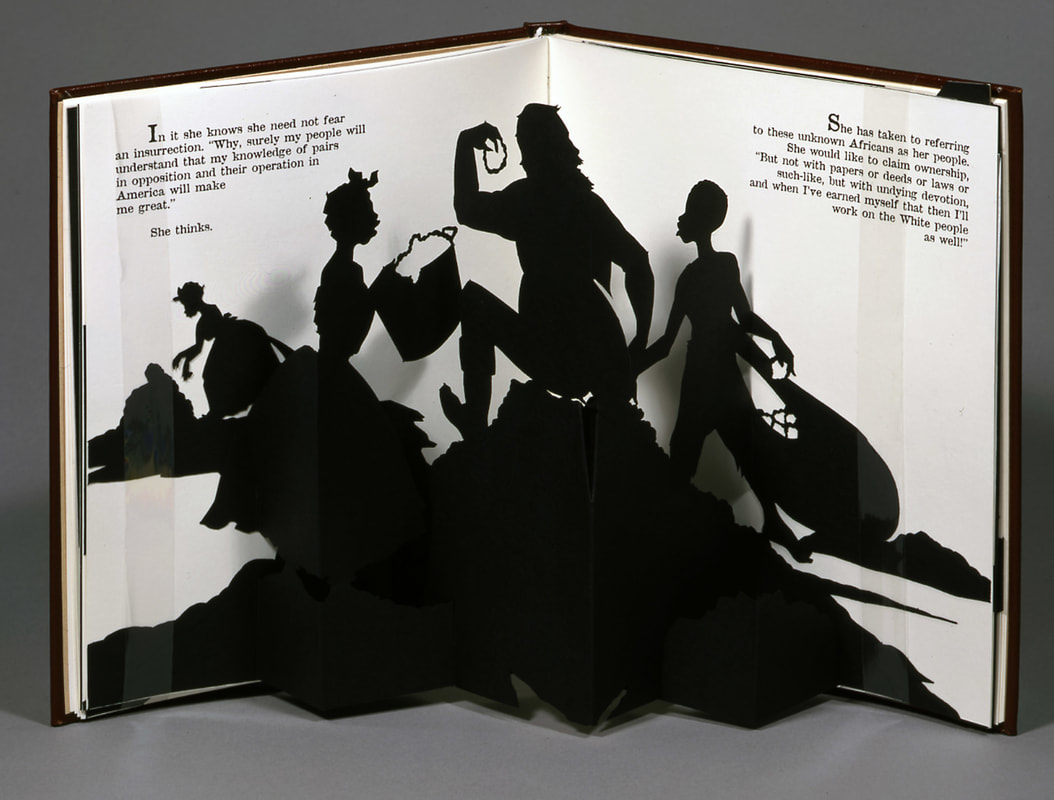(un)Bound:
|
|
|
(un)Bound: Artists' Books and Experimentation after 1960 explores some of the methods by which artists’ books reject and re-envision the traditional illustrated book form. The works in this exhibition require viewers to “read” them in usual and unexpected ways, often by connecting with them more as multifaceted, three-dimensional objects than as typical books. By disrupting conventional means of engagement, these books transcend their traditional format and become interactive objects of art.
Artists first began to reconceive the book as a form of art in the 1960s. As part of the larger cultural revolution of this period, the international Artist’s Book movement defied the standard notion of books as vehicles for predictable, cover-to-cover reading experiences by radically reimagining both the physical forms that books could take and the visual information that these new forms could purvey. At once, books became sculptural, architectural objects in which form and content determined each other and influenced how the viewer would experience both. This exhibition presents an overview of the artist’s book genre from the 1960s to the present day, featuring important examples by luminaries such as Ed Ruscha, Werner Pfeiffer, Kara Walker, Jasper Johns, and others. By intentionally covering text, folding pages, or requiring the viewer to move around, these artists present surprising and rewarding new ways to perceive the books. (un)Bound: Artists' Books and Experimentation after 1960 was curated by students of the Art Museum Practices program, at the University of Toledo Art Department. It will run from January 13, 2018 until April 29, 2018. |
|
|
|
|
Carl Andre
|
Ed Ruscha
Every Building on the Sunset Strip
|
Ruscha produced 10 photo books between 1963 and 1978. He rejected the tradition of limited edition, luxurious, handcrafted artists’ books, in favor of cheap large editions printed on professional high speed presses. These small, easily manipulated books looked like instruction manuals without the text. The books, which Ruscha described as the most difficult, toughest, meanest art he was making, were meant to give the viewer a liberating experience. Flipping through the pages can create a “happening” or a piece of performance art.
Although photography was always central to his artistic vision and strongly influenced by Robert Frank’s America, Ruscha’s photos are not ‘arty’ in any sense of the word. “I think photography is dead as a fine art; its only place is the commercial world, for technological or information purposes…mine are simply reproductions of photos. Thus, it is not a book to house a collection of art photographs—they are technical data like industrial photography. To me they are nothing more than snapshots.” Equally important to Ruscha, was that the book form remained free of Duchampian associations. “Duchamp had already killed the idea of the object on display. After what he did, it would be hard to surprise anyone. So books, conventional books, were a way for me to catch my audience off guard.” -Joanna Joys |
|
|
|
Jasper Johns
|
Kara Walker
|
|
Kara Walker’s Freedom: A Fable has become an integral part in our exhibition. In the early developmental stages of the exhibition its original purpose was to serve as a substitute, in case another piece was excluded, and nothing more. However, as we began to discuss and compare the context and meaning of each potential piece, it was determined that Freedom: A Fable offered much more to the exhibition in comparison to the other artist’s books in question.
The piece is simply not just a beautifully crafted object, but an interactive conversation between work and viewer on the cruel indignities of slavery, crafted through the ironic use of the eighteenth- and nineteenth-century silhouette portrait, executed in the book form. Through the inclusion of Freedom: A Fable, thematic variety and a new potential to amplify the show by giving the audience a familiar face to connect to the artist book genre is created. -KayEllen Rieff |
|
|
(un)Bound Exhibition Full List
|

